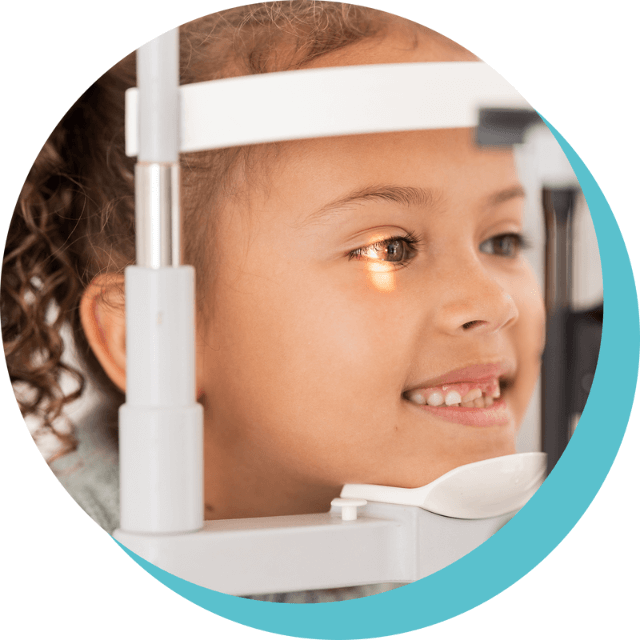September 1, 2023 OHIP Updates For Eye Examinations



Starting September 1, 2023, there are some changes to how OHIP covers eye exams in Ontario.
These adjustments are the result of thoughtful discussions between the Ontario Ministry of Health and the Ontario Association of Optometrists and are based on sound clinical evidence and expert advice. The shared goal is to ensure all Ontarians have access to the best, up-to-date eye care available and that patients at greatest risk of vision loss are publicly funded by OHIP.
To discover more about how these changes might impact you or your family members, select one of the tabs below. They provide more detailed information about OHIP’s coverage for eye exams across different age groups.
On March 24, 2023, the Ontario Government issued a media release about these changes, which you can read here.
OHIP coverage for eye examinations remains the same for this age group after September 1, 2023.
A patient aged 19 years and younger continues to be eligible for an OHIP-insured comprehensive eye examination once per year from an optometrist.
A patient aged 19 years and younger is also eligible for OHIP-insured “partial examinations” in between regular check-ups for a specific eye or vision problem. For example, a visit to the optometrist to diagnose and treat an eye infection is covered under OHIP for this age group.
OHIP does not cover second opinions. An examination by a different optometrist to confirm a diagnosis is not covered by OHIP.
Beginning September 1, 2023, a patient aged 20 to 64 with one or more of the following potentially sight-threatening conditions is eligible for an OHIP-insured comprehensive eye examination by an optometrist (maximum once every 12 months).
- Diabetes. A patient with a confirmed diagnosis of diabetes is eligible for an annual OHIP-insured comprehensive eye examination. The optometrist may ask for a list of medications or a letter from a physician to verify the diagnosis of diabetes.
- Glaucoma. A patient with a confirmed diagnosis of glaucoma is eligible for an annual OHIP-insured comprehensive eye examination. A patient who is being examined to determine whether or not they have glaucoma (e.g., because they have risk factors such as elevated eye pressure or a family history of glaucoma) is not eligible for OHIP-insured eye examinations.
- Cataracts. A patient with early cataracts that are not significantly impairing vision (better than 20/40 in the better eye) is not eligible for OHIP-insured eye examinations. However, if during the examination it is determined that the cataract impacts a patient enough that surgery is required, then that examination and referral is covered by OHIP.
- Retinal Disease. A patient with either an acute retinal condition (e.g., a new retinal detachment) or a progressive retinal condition (e.g., macular degeneration) is eligible for an OHIP-insured comprehensive eye examination. A patient with a stable retinal condition (e.g., a longstanding repaired retinal detachment) is not eligible for OHIP-insured eye examinations.
- Corneal Disease. A patient with an acute corneal disease (e.g., a new corneal ulcer) or a progressive corneal disease (e.g., Fuch’s dystrophy) is eligible for an OHIP-insured comprehensive eye examination. A patient with a stable corneal condition (e.g., a longstanding corneal scar) is not eligible for OHIP-insured eye examinations.
- Optic Nerve Pathway Disease. A patient with an acute optic nerve pathway disease (e.g., a new stroke affecting vision) or a progressive optic pathway disease (e.g., a pituitary gland tumor) is eligible for an OHIP-insured comprehensive eye examination. A patient with a stable nerve condition (e.g., a longstanding, stable nerve damage from an old stroke) is not eligible for OHIP-insured eye examinations.
- Uveitis. The condition must be active at the time of the examination for the patient to be eligible for an OHIP-insured comprehensive eye examination. A patient who has had uveitis in the past but the condition is not currently active is not eligible for OHIP-insured eye examinations.
- Patients taking any of the following medications: Chloroquine, Hydroxychloroquine, Ethambutol, Tamoxifen are eligible for an annual OHIP-insured comprehensive eye examination.
- Sudden onset of strabismus (crossed-eyes) due to injury or disease. A patient with a sudden onset of strabismus (crossed-eyes) is eligible for an OHIP-insured comprehensive eye examination. A patient with stable, longstanding strabismus is not eligible for OHIP-insured eye examinations.
A referral made by a physician to an optometrist is only insured by OHIP if one of the above 9 conditions exists.
In addition, a patient with any of the above 9 conditions is eligible for a maximum of two OHIP-insured follow-up “partial examinations” annually for that condition. For example, a patient with glaucoma is eligible for two additional OHIP-insured visits per year to have their eye pressures checked.
Evidence shows that the conditions of strabismus (crossed-eyes) and amblyopia (lazy eye) typically remain stable after childhood. Routine monitoring after childhood does not change how these conditions affect vision. As such, these are no longer eligible conditions for OHIP-insured eye examinations as of September 1, 2023.
Beginning September 1, 2023, a patient aged 65 and over with one or more of the following potentially sight-threatening conditions is eligible for an OHIP-insured comprehensive eye examination once every 12 months from an optometrist.
- Diabetes. A patient with a confirmed diagnosis of diabetes is eligible for an annual OHIP-insured comprehensive eye examination. The optometrist may ask for a list of medications or a letter from a physician to verify the diagnosis of diabetes.
- Glaucoma. A patient with a confirmed diagnosis of glaucoma is eligible for an annual OHIP-insured comprehensive eye examination. A patient who is being examined to determine whether or not they have glaucoma (e.g., because they have risk factors such as elevated eye pressure or a family history of glaucoma) is eligible for an OHIP-insured comprehensive eye examination every 18 months.
- Cataracts. A patient with cataracts that are significantly impairing vision (worse than 20/40 in the better eye) or requiring a surgical referral, is eligible for an OHIP-insured comprehensive eye examination 12 months after their last one. A patient with early cataracts that are not significantly impairing vision (better than 20/40 in the better eye or not requiring a surgical referral), is only eligible for an OHIP-insured comprehensive eye examination every 18 months.
- Retinal Disease. A patient with either an acute retinal condition (e.g., a new retinal detachment) or a progressive retinal condition (e.g., macular degeneration) is eligible for an OHIP-insured comprehensive eye examination 12 months after their last one. A patient with a stable retinal condition (e.g., a longstanding repaired retinal detachment) is only eligible for an OHIP-insured comprehensive eye examination every 18 months.
- Corneal Disease. A patient with an acute corneal disease (e.g., a new corneal ulcer) or a progressive corneal disease (e.g., Fuch’s dystrophy) is eligible for an OHIP-insured comprehensive eye examination 12 months after their last one. A patient with a stable corneal condition (e.g., a longstanding corneal scar) is only eligible for an OHIP-insured comprehensive eye examination every 18 months.
- Optic Nerve Pathway Disease. A patient with an acute optic nerve pathway disease (e.g., a new stroke affecting vision) or a progressive optic pathway disease (e.g., a pituitary gland tumor) is eligible for an OHIP-insured comprehensive eye examination 12 months after their last one. A patient with a stable nerve condition (e.g., a longstanding, stable nerve damage from an old stroke) is only eligible for an OHIP-insured comprehensive eye examination every 18 months.
- Uveitis. A patient with uveitis that is active at the time of examination is eligible for an OHIP-insured comprehensive eye examination 12 months after their last one. A patient who has had uveitis in the past but the condition is not currently active is only eligible for an OHIP-insured comprehensive eye examination every 18 months.
- Patients taking any of the following medications: Chloroquine, Hydroxychloroquine, Ethambutol, Tamoxifen are eligible for an annual OHIP-insured comprehensive eye examination.
- Sudden onset of strabismus (crossed-eyes) due to injury or disease. A patient with a sudden onset of strabismus (crossed-eyes) is eligible for an OHIP-insured comprehensive eye examination 12 months after their last one. A patient with stable, longstanding strabismus is only eligible for an OHIP-insured comprehensive eye examination every 18 months.
Beginning September 1, 2023, a patient aged 65 and over without one of the above 9 potentially sight-threatening conditions is eligible for an OHIP-insured comprehensive eye examination once every 18 months from an optometrist.
All patients aged 65 and over are eligible for a maximum of two OHIP-insured “partial examinations” in between regular check-ups if needed. For example, a patient with glaucoma is eligible for two additional OHIP-insured visits per year to have their eye pressures checked.
A patient aged 65 and over may choose to visit their optometrist for an appointment at any time outside of these insured services. Fees for those examinations apply.